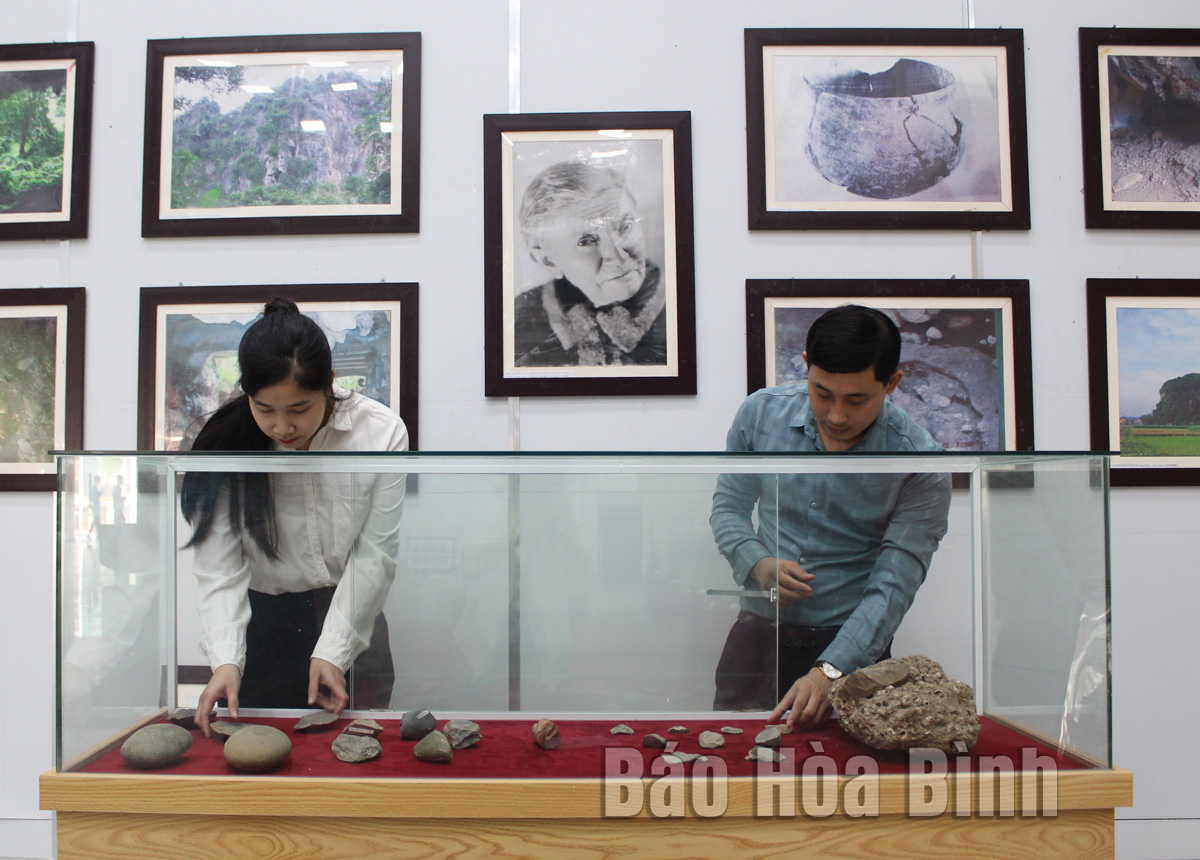(HBO) – The Hoa Binh Civilisation is a famous prehistoric one found in many Southeast Asian countries, of which Vietnam is home to the biggest number and most diversity of vestiges. More than 130 sites dating back to this civilisation have been discovered in Vietnam, including over 70 in Hoa Binh province. The presence of the Hoa Binh Civilisation is proof that Hoa Binh - Vietnam is one of the cradles of humankind.
Staff members of the Hoa Binh
provincial Museum arrange artefacts of the Hoa Binh Civilisation.
It was not until 1932 that this prehistoric
civilisation was recognised by international archaeologists. The first
conference on the Far East’s prehistory held in Hanoi in January 1932 agreed to
name this civilisation "Hoa Binh” as proposed by French archaeologist Madeleine
Colani.
Historical evidence shows that the Hoa Binh
Civilisation appeared and existed in the prehistoric territory of Vietnam about
18,000 - 7,500 years ago. Its existence not only testified that Vietnam was one
of the cradles of humankind but also provided archaeologists, scientists, and
anthropologists with persuasive evidence of the biological development of the
homosapiens species.
Scientific studies found that the Hoa Binh
Civilisation existed not only in Vietnam but also across Southeast Asia. In the
north of the region, its vestiges have been unearthed in southern China. They
have also been discovered in Malaysia and Sumatra (Indonesia) in the south;
Myanmar, Nepal, and Thailand in the west; and even a cave of the Philippines in
the east of the region.
In Vietnam, which boasts the biggest number and
most diversity of traces, archaeologists have recorded more than 130 places
dating back to this civilisation. These sites concentrate in the northern
provinces of Hoa Binh (72) and Thanh Hoa (32). The remainders scatter over the
provinces of Lai Chau, Son La, Ha Giang, Ninh Binh, Nghe An, Quang Binh, and
Quang Tri. Therefore, many domestic and foreign scientists believe that Hoa
Binh province was the hometown of this civilisation.
To Anh Tu, Director of the provincial Museum,
said the Hoa Binh Civilisation is a transition from the Old Stone Age (Son Vi
Civilisation) to the New Stone Age (Bac Son Civilisation). The main living
places of humans that time were caves and stone shelters while a small number
of them resided outdoor and on the banks of rivers and springs.
They lived in a matriarchal society and mainly
on hunting and foraging. They also created and used tools made from bone, horn,
and clamshell, along with ceramic objects. In particular, they were also aware
of beauty and fine arts, and buried the dead with legs bent towards the body in
their living places, he added.



